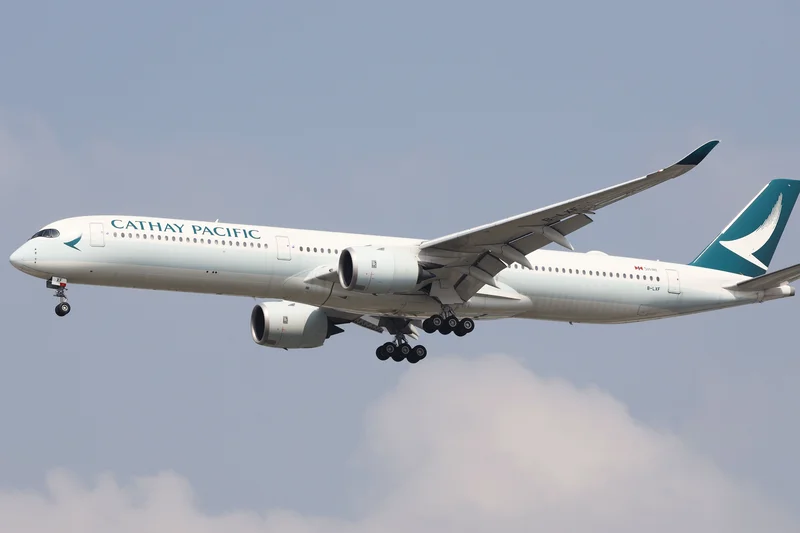When I was a kid, I used to lie in the grass and watch planes carve white lines across the deep blue canvas of the sky. There was a kind of magic to it, a promise that we, as a species, could conquer distance and connect our world. That magic is still there, but now it’s shadowed by a question we can no longer ignore: at what cost? For decades, the miracle of flight has been tied to the carbon-intensive reality of fossil fuels.
Then, an announcement trickles out. Cathay Pacific and Airbus, two titans of the aviation world, are co-investing up to $70 million to scale up Sustainable Aviation Fuel in Asia. When I first saw the news, I didn't just see a press release about a corporate partnership. I saw a blueprint. This is the kind of breakthrough that reminds me why I got into this field in the first place—it’s a tangible signal that we’re finally moving from abstract goals to concrete action.
Some analysts, like those at MarketBeat, have Cathay Pacific rated as a "Hold," suggesting investors should wait and see. They see numbers on a balance sheet. I see the first sketch of a new industrial revolution.
Let’s be clear about what we’re talking about. The partnership is focused on Sustainable Aviation Fuel, or SAF. In simple terms, it’s a direct, drop-in replacement for traditional jet fuel, but it's made from renewable sources like used cooking oil, agricultural waste, or even, in the future, captured carbon dioxide. The technology exists. The problem has always been one of scale and cost. Right now, SAF makes up less than 1% of the fuel burned by airlines and costs about five times as much as its fossil-based counterpart.
This is where the partnership becomes so much more than a $70 million check. That amount, in the grand scheme of global energy, is a rounding error. But its true value isn't in the dollars; it's in the commitment. What Cathay and Airbus are building is the foundational infrastructure for a market that doesn't yet exist at scale. Think of it like the very first fiber optic cables laid across the Atlantic. The initial investment was huge and the immediate use was limited, but it created the backbone for the entire internet as we know it today. This investment is a similar vote of confidence, a signal to producers, refiners, and governments that if you build the capacity, the buyers will be there.
This isn't just about one airline buying some green fuel, it’s about creating an entire ecosystem—refineries, supply chains, logistics, policy—that can scale across the most dynamic economic region on the planet. The International Air Transport Association (IATA) projects that SAF will need to account for a staggering 65% of the emissions reduction for aviation to hit net-zero by 2050. We don't get there with one-off purchases. We get there by building the factory. And what bigger, more critical place to build it than the Asia-Pacific, which is projected to handle over 40% of all global passenger traffic by 2040?

So, the real question isn't whether $70 million is enough. The question is: what will this signal unlock? Who will follow their lead?
For a century, the story of aviation has been one of fierce competition. Airlines versus airlines, manufacturers versus manufacturers. But the climate challenge is a problem that no single company, or even a single nation, can solve alone. The physics of our atmosphere don't care about market share. What makes this Cathay-Airbus venture so profound is that it represents a critical shift from a competitive mindset to a collaborative one.
Here you have an airline, the end-user of the fuel, partnering directly with the aircraft manufacturer, the creator of the technology. Cathay has operated Airbus jets since 1989 and has over 70 more on order. Airbus has committed to making all its planes 100% SAF-compatible by 2030. This isn't a transactional relationship; it's a symbiotic one. They understand that their futures are fundamentally intertwined. Cathay can’t fly net-zero without SAF, and Airbus can’t sell a new generation of aircraft if they run on the fuels of the past.
This is the kind of vertical integration of purpose that we so desperately need. It’s a model that moves beyond simply complying with regulations like CORSIA, the global carbon offsetting scheme. Offsetting is like putting a bandage on the problem. This is about healing the wound itself by changing the very lifeblood of the industry.
Of course, with this great power comes an immense responsibility. This transition cannot create a two-tiered system of air travel, where only the wealthy can afford to fly "sustainably." The goal of this innovation must be to make clean aviation the default, not a luxury add-on. The true measure of success won't just be lower emissions, but a system that remains accessible and continues to connect our world. How do we ensure the benefits of this green revolution are shared by all, and not just reflected in higher ticket prices?
Imagine a future where the contrail of a plane isn't a mark of pollution, but a symbol of human ingenuity. A future where you can board a flight to see family, explore a new culture, or close a business deal without a shred of environmental guilt. That is the world this partnership is trying to build. It’s a long, difficult, and expensive journey. But for the first time, it feels like the key players are finally looking at the same map and agreeing on the destination.